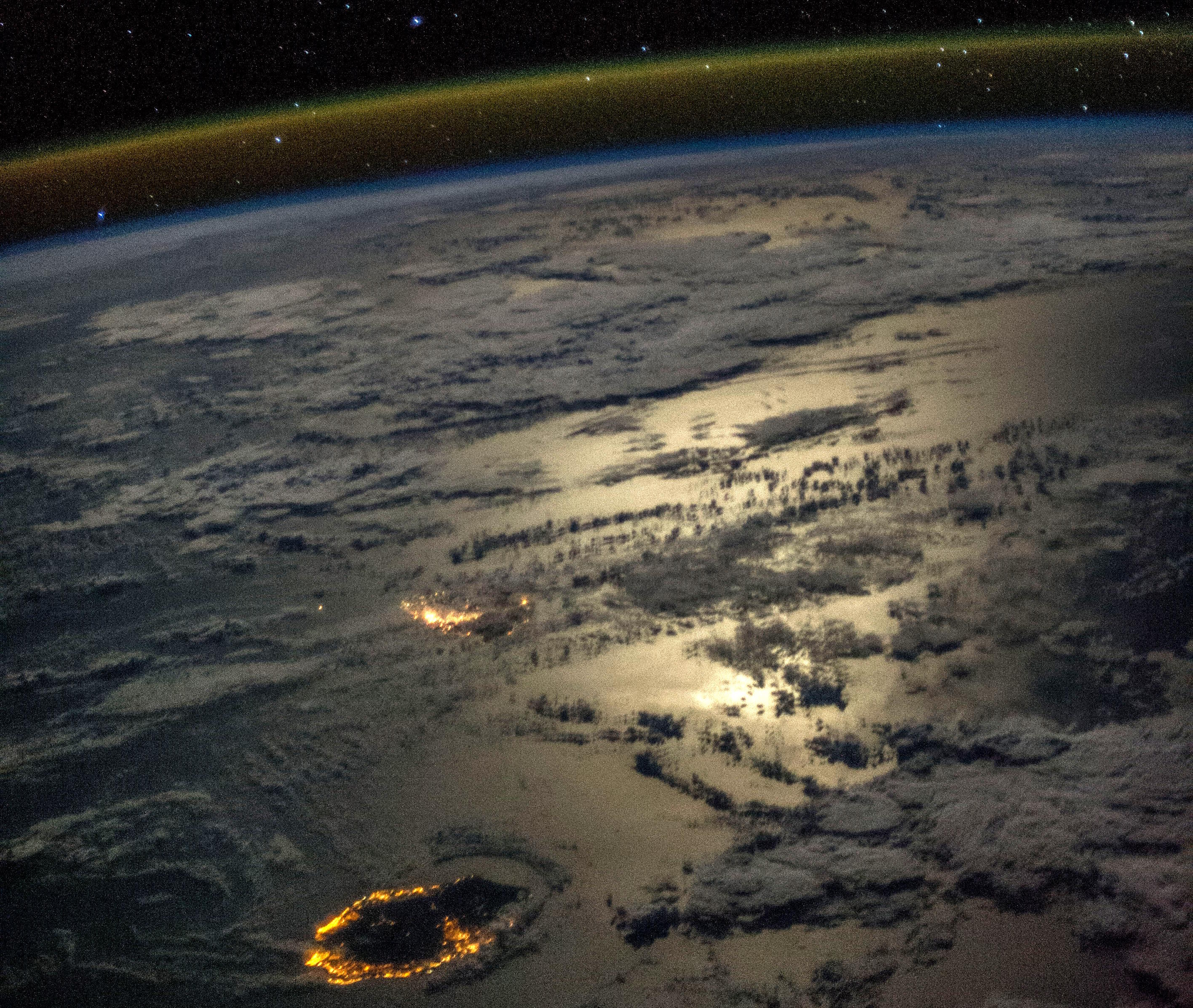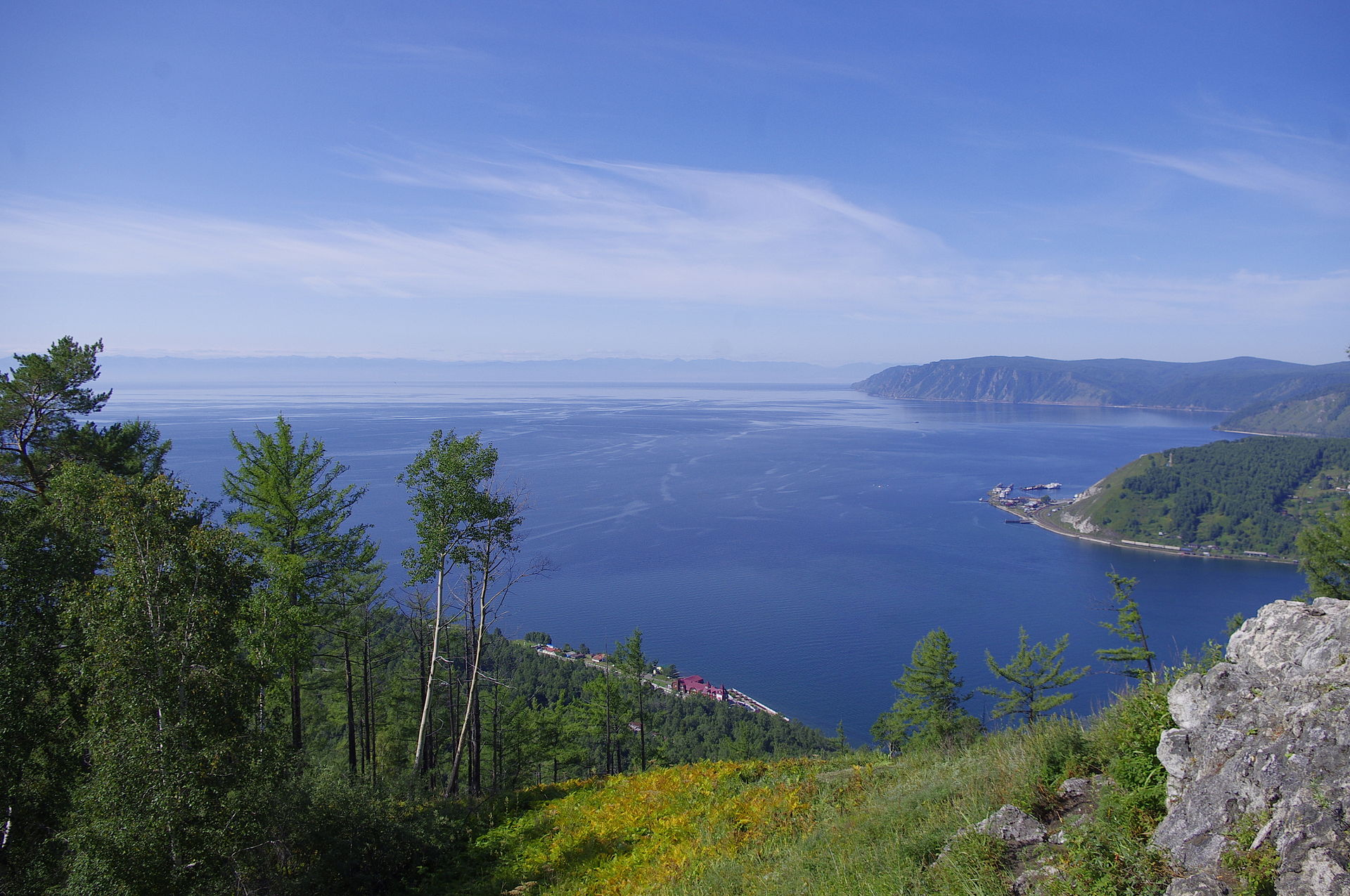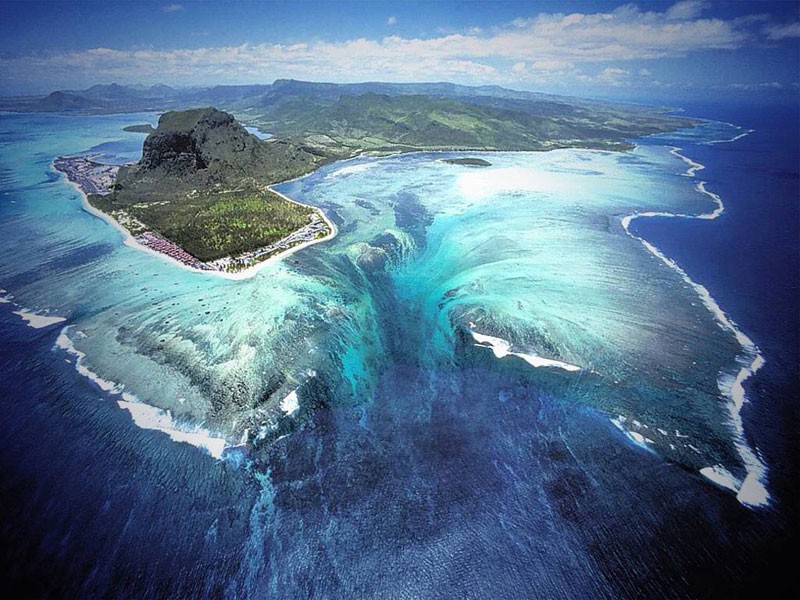Mt. Vesuvius buried Pompeii, but it incinerated the people of Herculaneum. Here’s how
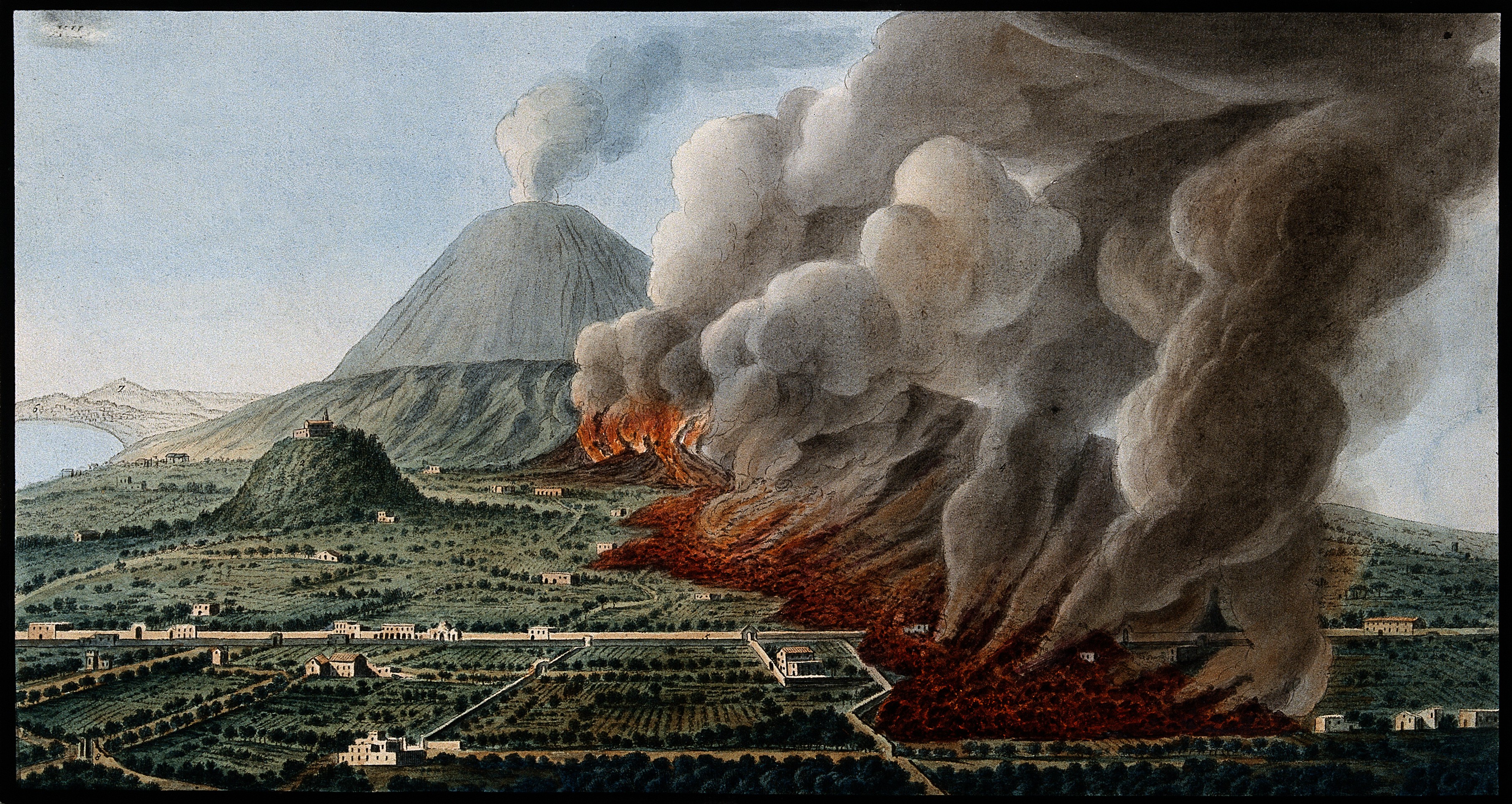
- In the year 79 CE, a catastrophic eruption of Mt. Vesuvius buried the ancient Roman towns of Pompeii and Herculaneum, killing 100% of their inhabitants.
- While Pompeii’s residents were well-preserved, buried under a cloud of ash, the bodies of nearly all ~5000 citizens of Herculaneum were nowhere to be found.
- At last, we’ve solved the mystery of where they went. They were incinerated, almost instantly, by the most lethal volcanic phenomenon of all: a pyroclastic density current.
It was nearly 2000 years ago — all the way back in the year 79 C.E. — that Mt. Vesuvius unleashed a catastrophic eruption, killing tens of thousands and burying the ancient cities of Pompeii, Herculaneum, Oplontis, and Stabiae. The most severe stage of the eruption began on August 24th and continued through the 25th, launching a column of ash that reached a maximum altitude of up to 33 kilometers. As the ash settled, it deposited a new layer of volcanic material some ~20 meters (66 feet) thick: creating a humanitarian disaster but an archaeological field of riches, as some fantastic details of ancient Roman life have been preserved in these locations.
While enormous numbers of human remains were also buried and preserved beneath the volcanic ash, a curious detail emerged: practically no human remains were found in the city of Herculaneum, despite a population of about 5000. In stark contrast to the larger Pompeii, where human remains were ubiquitously discovered, the only human remains discovered in Herculaneum came in the form of skeletons, found several kilometers away: along the ancient coastline.
A novel study, published in Scientific Reports, points to a startling conclusion: a special type of hot, volcanic ash cloud — known as a diluted pyroclastic density current — scorched Herculaneum almost instantly, incinerating thousands at temperatures between 495-555 °C (923-1031 °F). It’s a remarkable find, and one that could forever alter how we mitigate the hazards from volcanic eruptions.
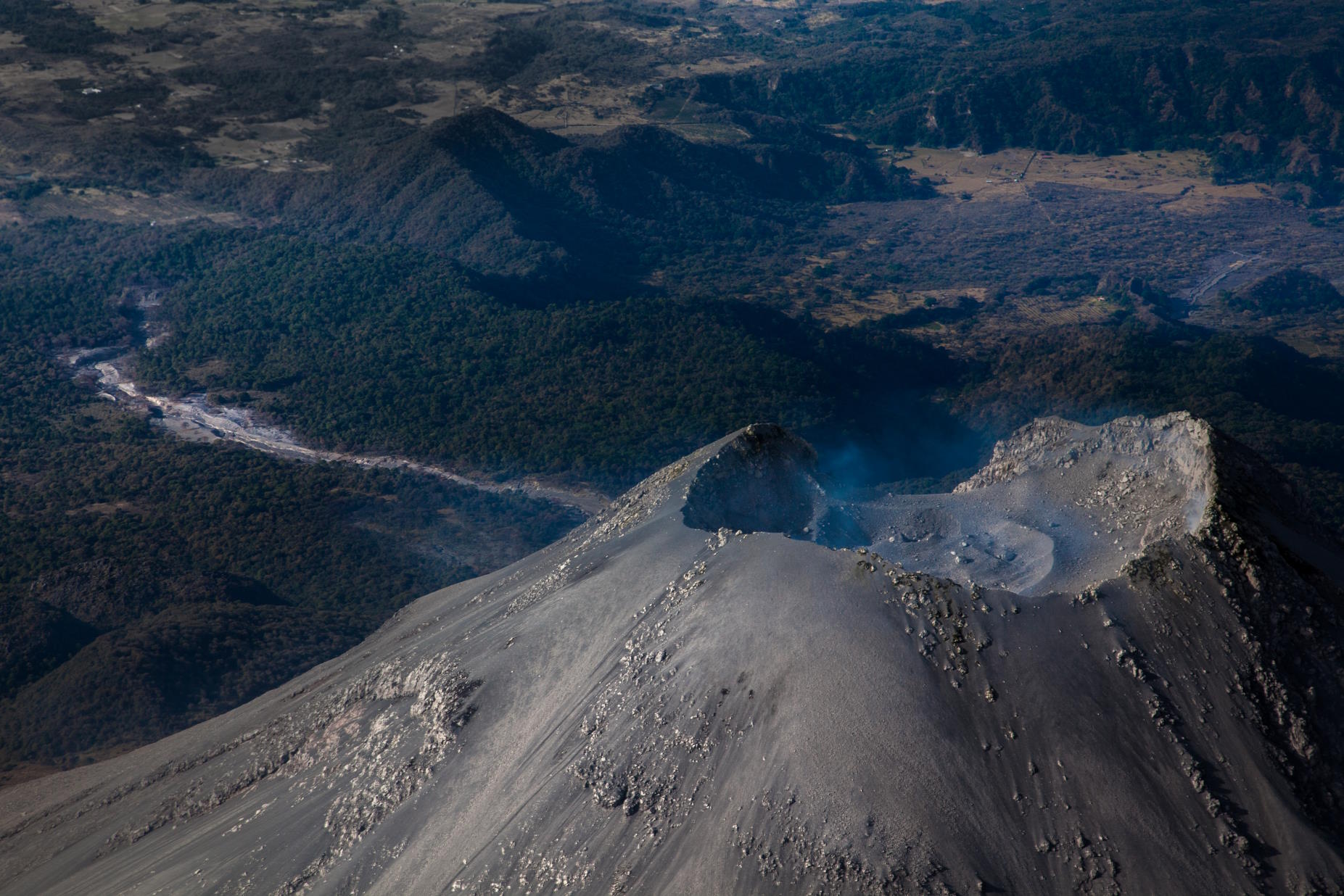
Mt. Vesuvius has been one of Earth’s most active volcanoes over human timescales, with a mix of large and small eruptions occurring several times throughout recorded history. The earliest known instance occurred sometime 1800-2000 years prior to the 79 C.E. catastrophe: when the Avellino eruption engulfed and buried a number of Bronze Age settlements. At least 54 total eruptions have been recorded or reconstructed, including large, destructive ones in the years 79, 472, and 1631, all following relatively long periods of inactivity. Although there were a total of 22 Vesuvian eruptions in the 17th, 18th, 19th, and 20th centuries, Vesuvius hasn’t erupted in 79 years: since its most recent 1944 event.
One fear that scientists have comes from historical and archaeological/paleontological records, which indicate that the most destructive volcanic events often follow a long period of dormancy. The recent dormant period — the longest for Vesuvius since just prior to its explosive 1631 event — suggests that the next eruption of Mt. Vesuvius may pose a threat to a number of Italian cities located nearby, including the dangerously close Naples, with a population of over 3 million. (Naples was severely affected during Vesuvius’s 1906 eruption.) Vesuvius is far from dormant, emitting heat, steam, and sulfurous gases nearly continuously from its crater walls and floor, but no magma has been detected within 10 kilometers of the surface. It will certainly erupt again, but no one knows when.
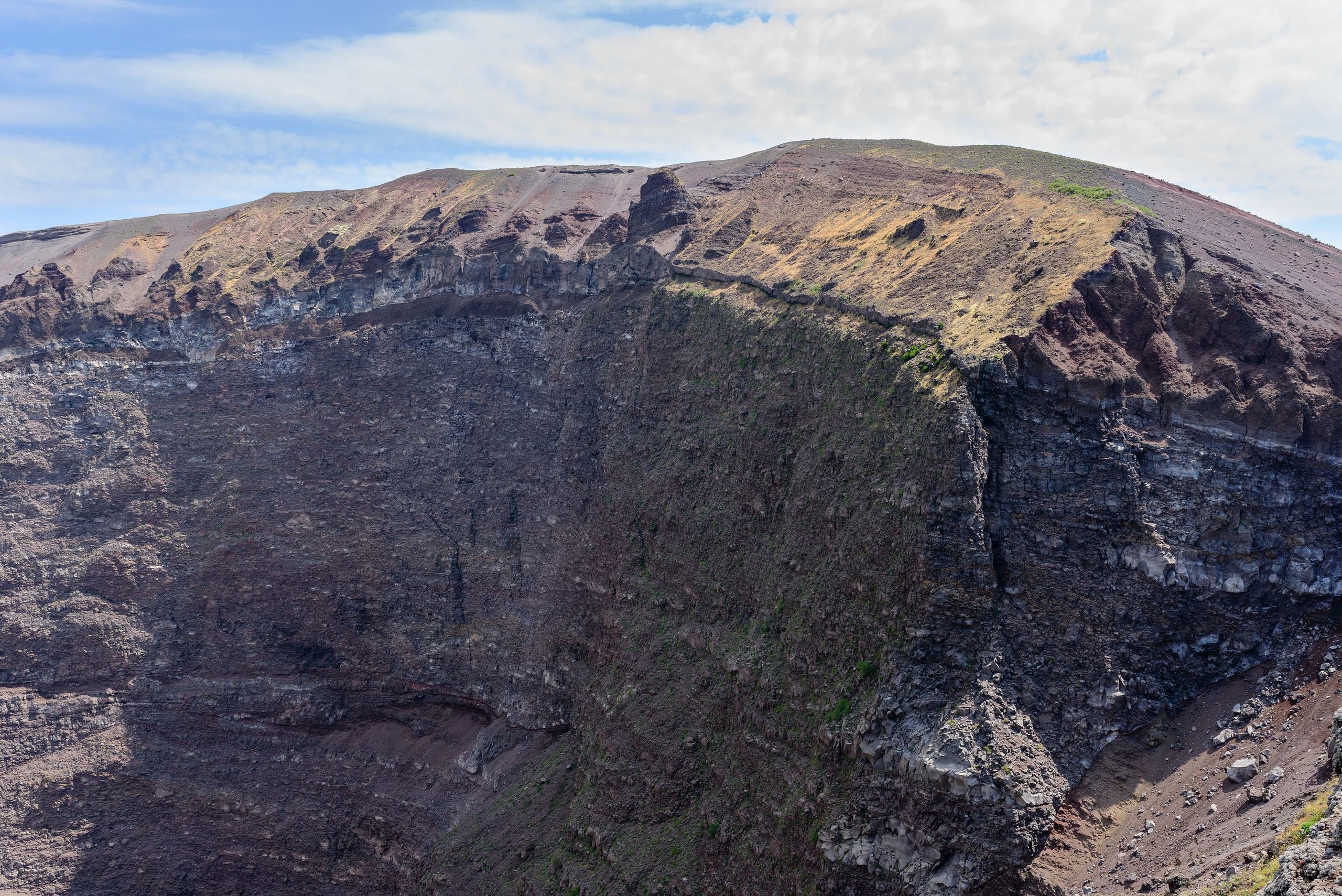
The Vesuvian eruption of 79 C.E. was not only the largest eruption of this mountain over the past 2000 years, but is one of the earliest to have a recorded eyewitness account of the event: from Pliny the Younger. While his uncle, Pliny the Elder, perished in a rescue attempt, Pliny the Younger remained across the Bay of Naples in the city of Misenum, watching a dense cloud of ash rise some 30-33 km high above the mountain peak on August 24th. Earthquake tremors ensued that night, leading residents to abandon their village and causing disastrous waves within the Bay of Naples itself.
A massive ash cloud, illuminated by periodic strikes of volcanic lightning, towered over the sky on the morning of August 25th. As a rain of ash fell, survivors had to consistently shake the accumulated debris off in order to avoid being buried alive. Later that day, the ashfall ceased, but the damage had already been done. Between Pompeii, Herculaneum, and the other, smaller towns and villages that were buried, more than 30,000 total were estimated to have been killed in the eruption.
But archaeologically, while over 1000 human casts were able to be made from their impressions in the Pompeiian ash deposits, no such features exist at Herculaneum. Other than skeletons found in arched vaults near the ancient Herculaneum shoreline, few other human remains have been found there.
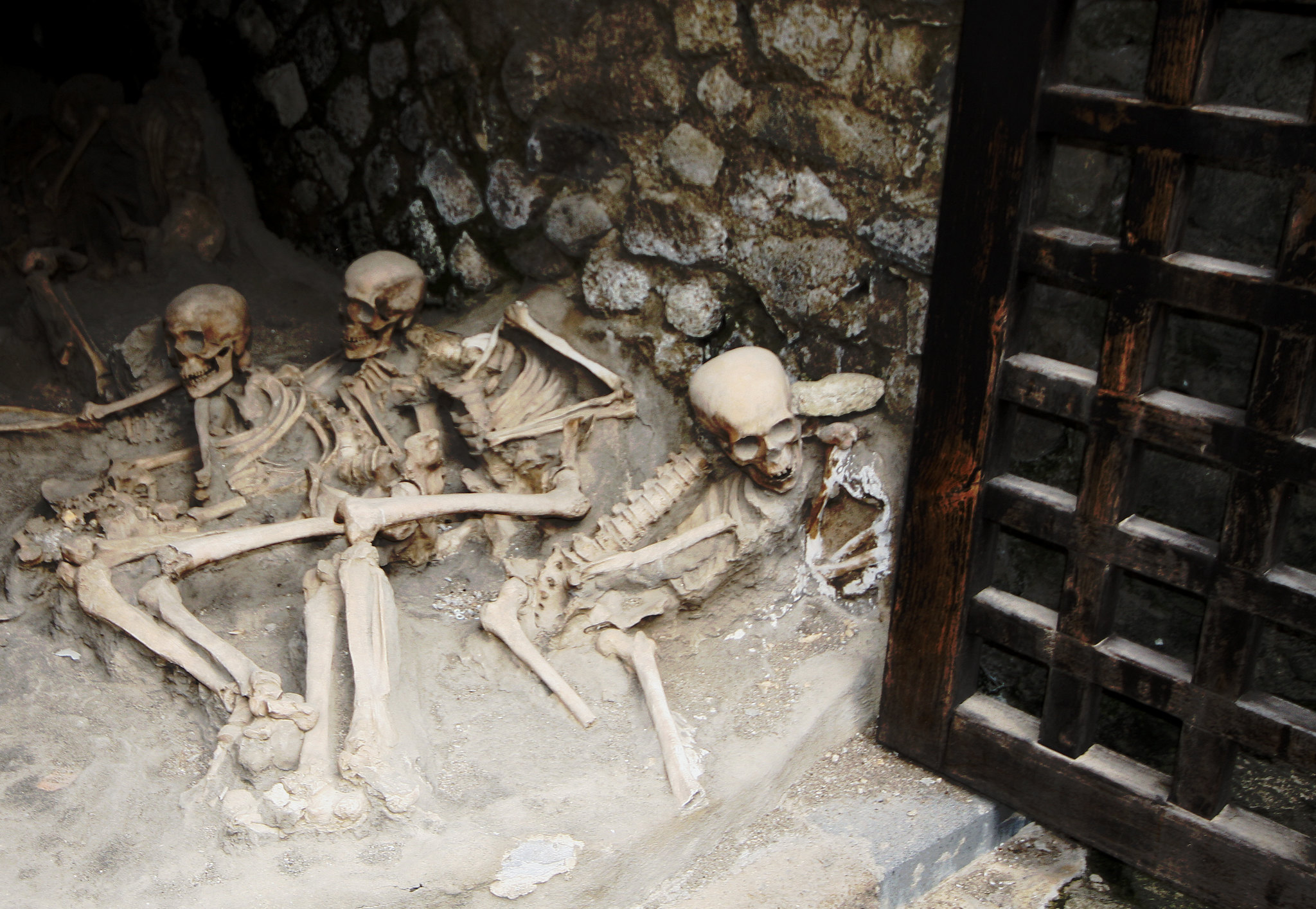
So what happened? Why, when the remains and bodies of humans living in Pompeii were so well-preserved throughout the city, was the situation at Herculaneum so different?
A suggestive clue arrived with a 2018 study that examined the skeletons that were found along the ancient waterfront at Herculaneum: a rarely-seen red-and-black mineral residue was found encrusting the bones. That mineral residue was also found along the ash-bed encasing the skeletons, as well as within the ash found in the skulls’ intracranial cavities.
This mineral turned out to be very rich in iron and iron oxides, suggesting that it came from a rather gruesome phenomenon: the thermal decomposition of heme iron. As iron is an essential component of human blood, the leading hypothesis is that the bodily fluids and soft tissues of the volcano victims were degraded by extreme heat, indicating that vaporization took place. This suggests temperatures somewhere in the range of around 350-400 °C (660-750 °F), and points to the notion that whereas the victims of Pompeii were killed by roof collapses and ash suffocation, the victims at Herculaneum may have been incinerated.
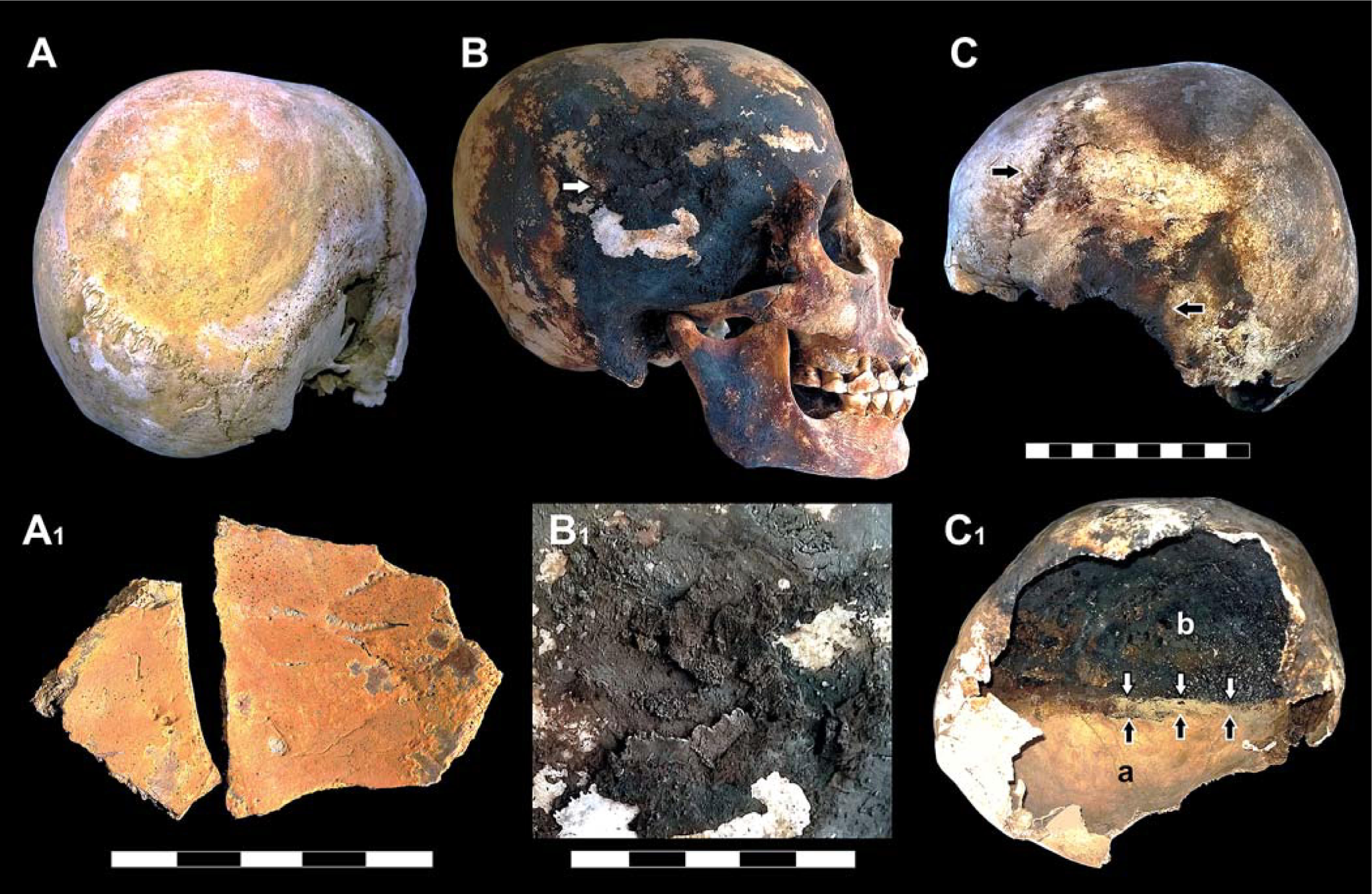
So what about the rest of Herculaneum? Was the city rapidly abandoned at the first sign of the eruption? Did everyone within the city take refuge along the shore or on the waters?
With an estimated pre-eruption population of about 5000 and practically no survivors, these explanations are unlikely. Instead, it’s generally thought that the humans living there were indeed killed by the eruption, but in a fashion that left no remains behind at all. Although it’s horrifying to contemplate, such a phenomenon is not without precedent.
On May 8, 1902, one of the deadliest volcanic disasters of all-time occurred at St. Pierre, Martinique, when nearly 30,000 people were killed almost instantaneously by a volcanic eruption. It wasn’t the lava that killed them, nor the ash, nor suffocation from dangerous volcanic gases. Instead, what happened was a phenomenon known as a diluted pyroclastic density current, where a turbulent, high-temperature region of air flows across the ground. Although these currents typically mix with the ambient air and dissipate quickly, there are rare occurrences where the low-density ash cloud retains these deadly conditions and chaotically overruns the land, even across topographic barriers.
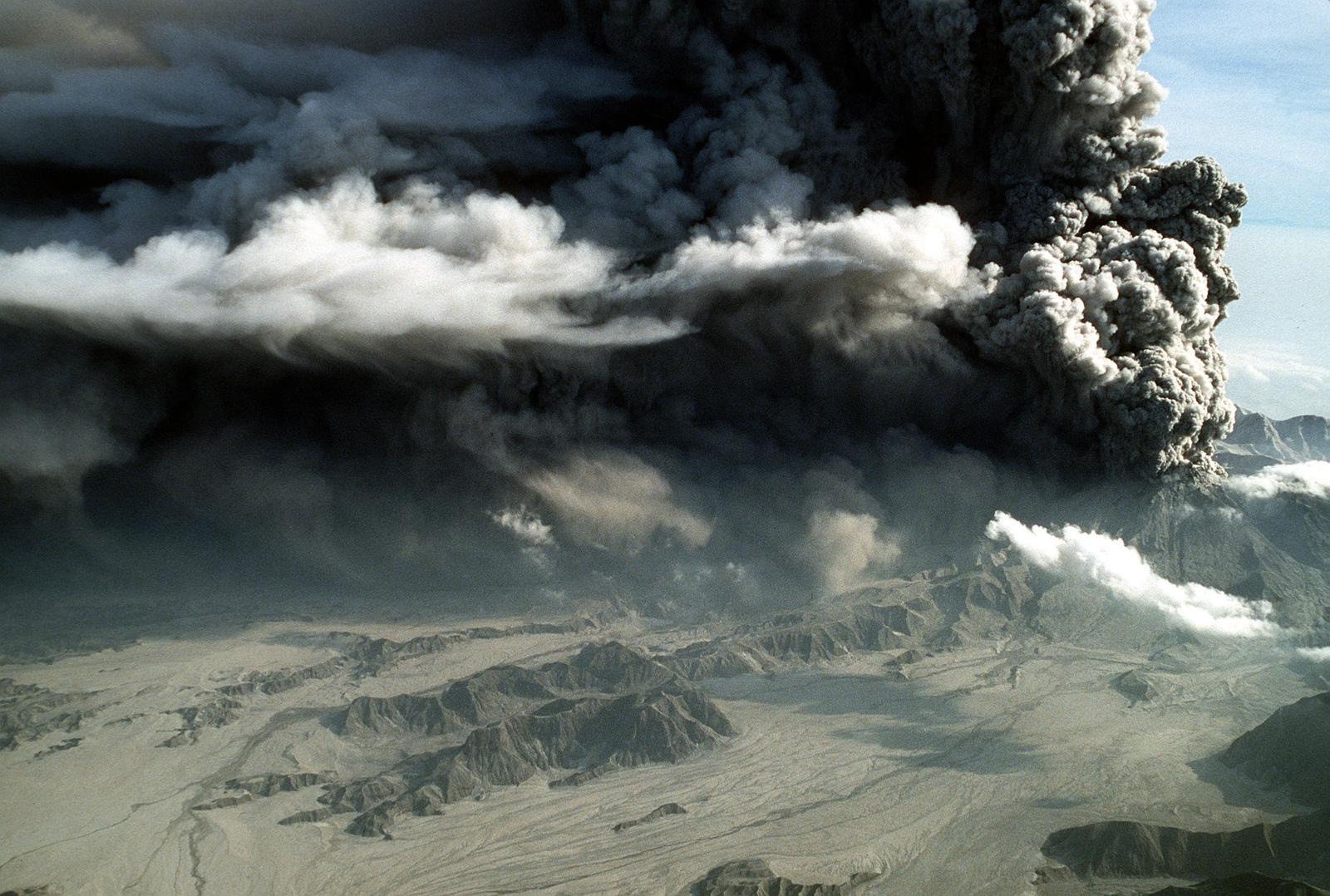
When temperatures exceed a certain threshold of around ~480 °C (900 °F), death primarily ensues not because of asphyxia from inhaling toxic gases or ash, but rather from burning or even its more intense cousin: incineration. On May 8 of 1902, about 2 weeks into a 3+ year eruption of Mount Pelée, a large explosion occurred near the summit at around 8:00 AM. Swiftly, at hurricane-level speeds, a mix of turbulent volcanic gases embedded with glowing-hot particles of lava swept down the southwest flank of the volcano. Just 2 minutes later, this pyroclastic menace arrived 10 kilometers away in the city of Saint-Pierre, killing ~28,000 people practically instantly, burning many and burying others. The ensuing firestorm burned the city down, with nearly 3000 others killed by the eruption later that year.
More recently, this phenomena was seen:
- during the 1991 eruption of Mt. Unzen in Japan,
- at the 2010 eruption at Merapi, Indonesia,
- in the 2018 eruption in Guatemala,
- and during the 2019 eruption in New Zealand.
While only 44 people died due to the pyroclastic density currents in the Japan event and an estimated 200 died in the Indonesia event, the official death toll at the Fuego de Guatemala event — around 300 — likely represents only 10% of the total estimated casualties there.
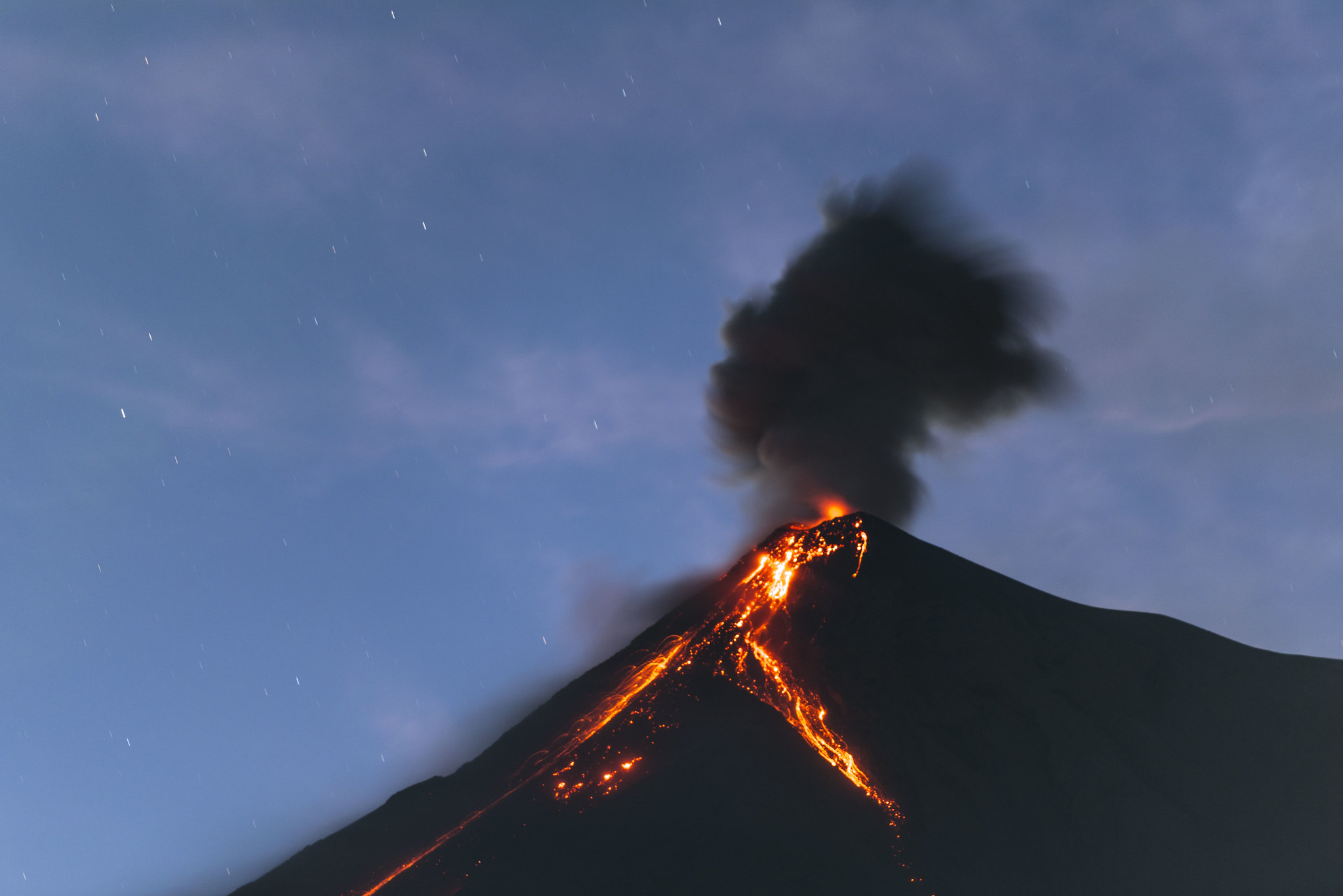
In all of these cases, the same sets of conditions were present.
- A volcanic eruption was taking place,
- with high-concentration lava flows and towering ash clouds,
- where ash cloud surges detached from the main plume,
- chaotically traveling along the ground in an unpredictable path,
- killing almost everyone caught within that cloud,
- with very little ash seen covering any remaining bodies,
- with the causes of death being ascribed to high temperatures, rather than by the impact of pressure or suffocation.
Also present in all cases? The ash cloud surge occurred in a valley, with higher-elevation hills bordering both sides, helping to confine these pyroclastic density currents.
When looking at the heat-induced effects suffered by the victims in these events, as well as the heat-induced effects of the skeletons found in Herculaneum — including charred, exploded skulls, vaporized brains, cracked and charred bones and teeth, and thermal degradation of blood proteins — it all indicates very high temperatures, at or above ~500 °C (930 °F). As the authors of this latest study note:
“These tragic volcanic events display remarkable similarities with the most iconic eruption of the 79CE Vesuvius.”
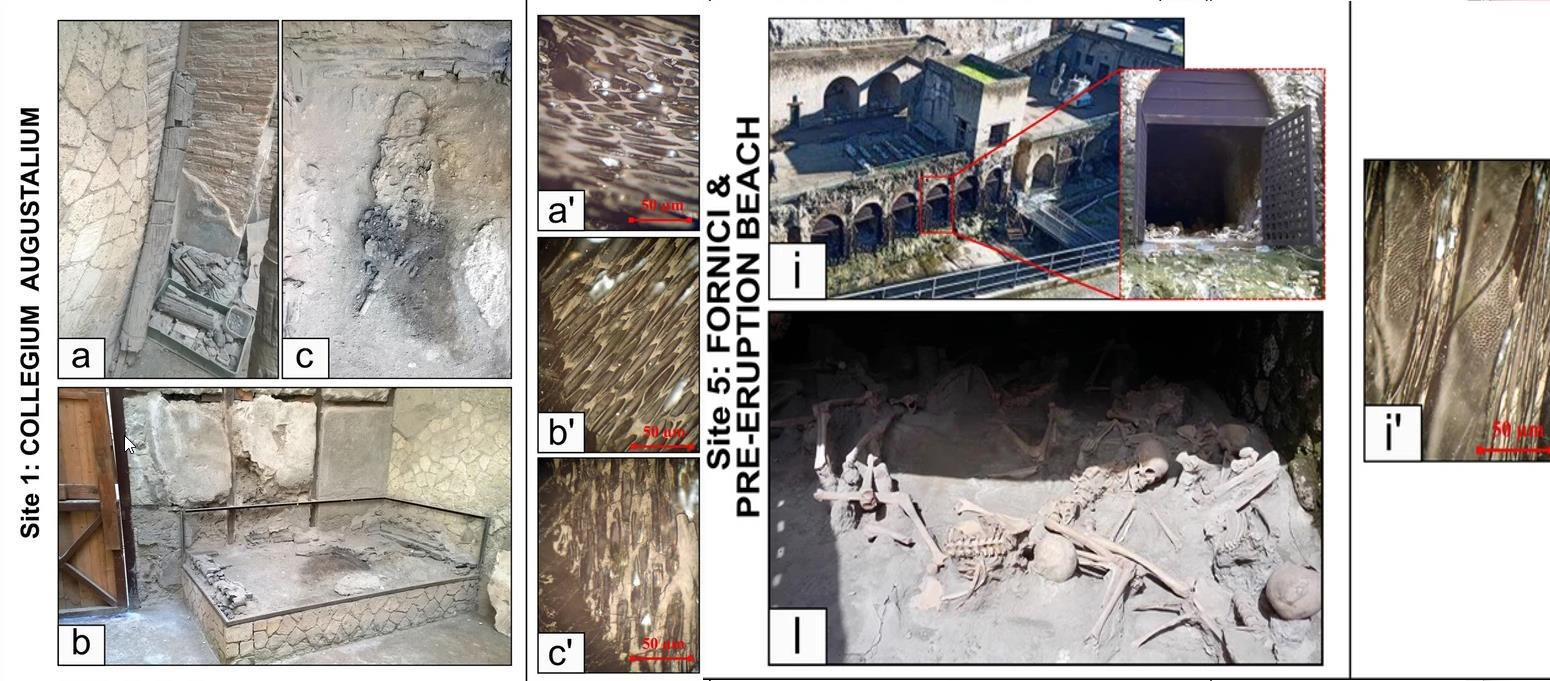
If this were the only evidence we had, it would point toward a low-density pyroclastic density current (i.e., an ash cloud surge at very high temperatures) sweeping through Herculaneum nearly 2000 years ago, and wiping out everyone who lived there, incinerating them prior to the majority of ashfall arriving atop the city itself.
But the brilliance of this newest study is that it adds in an entirely novel line of evidence that completely confirms this scenario: all throughout Herculaneum, natural construction materials e.g., wood and other carbon-containing materials were used. When exposed to heat of various temperatures for various durations, charcoal is created. By performing various types of analysis, the authors sought to reconstruct the order of events that took place across the full extent of Herculaneum.
What they found was astounding. At two upstream locations (i.e., closest to the volcano and farthest from the shoreline), the Collegium Augustalium and the Decumanus Maximum, the first, earliest, and hottest dilute pyroclastic density current arrived, corresponding to temperatures of at least 550 °C (1020 °F) but for only a short-lived duration, as the uncomplete carbonification of the wood there indicates.
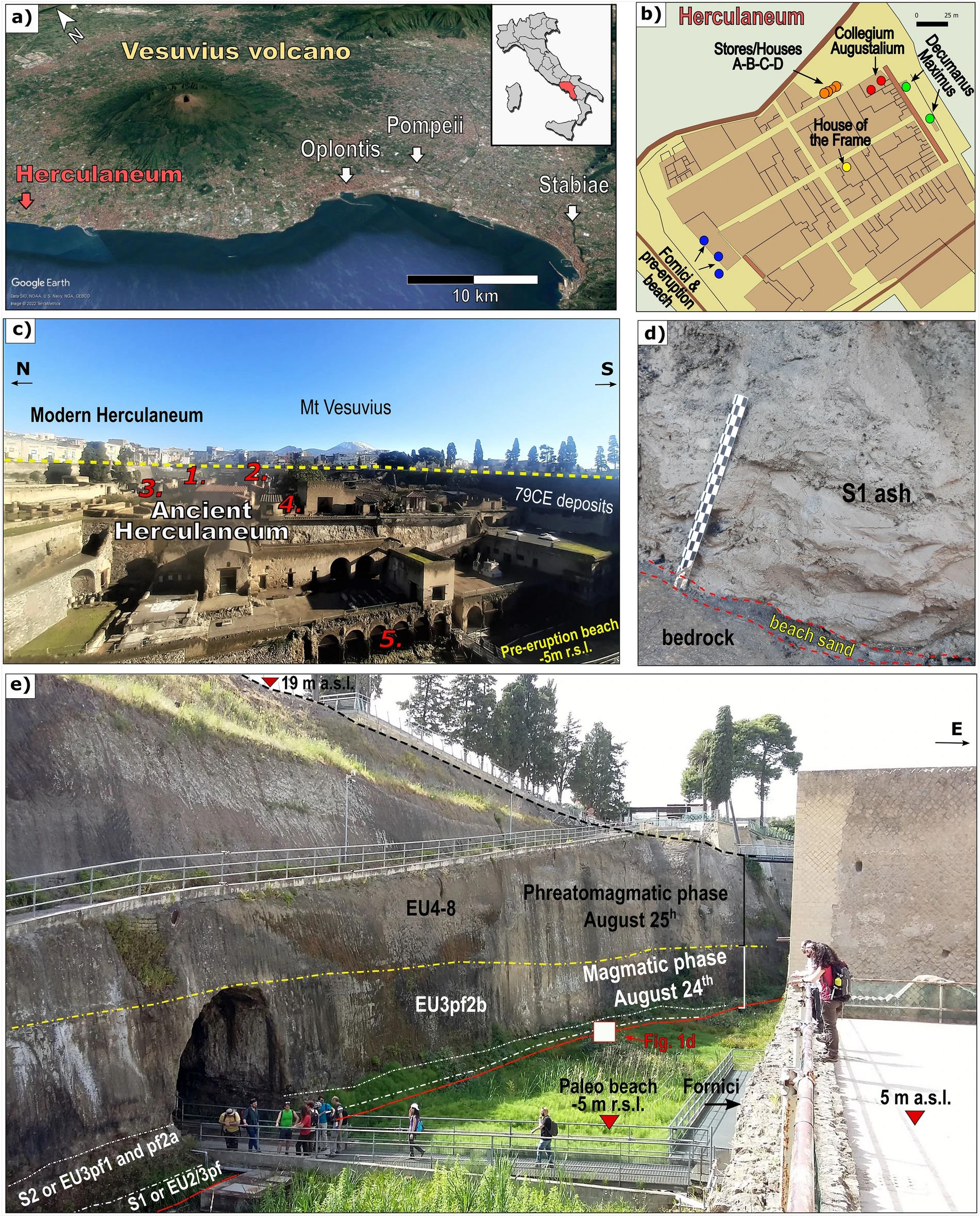
This early event was later followed by additional pyroclastic currents, eventually burying the entire area beneath some ~20 meters of thick, volcanic deposits. At least two further carbonization events occurred amidst these later flows:
- one at temperatures ranging from 390-465 °C (735-870 °F),
- and another at temperatures ranging from 315-350 C (600-660 °F),
which is likely due to the increasing involvement of ground water in cooling those pyroclastic flows as the eruption progressed.
But that very first, early, ultra-hot pyroclastic density current is required to explain the presence of a vitrified (i.e., converted into glass) brain found within a victim’s skull in the Collegium Augustalium. As the authors note:
“The transformation into glass of fresh cerebral tissue in a hot environment is only possible if two conditions are met: (1) the heating event is short-lived, so that the tissue is not fully vaporized, and (2) once the diluted PDC has vanished, the body is not fully entombed in a hot deposit, a necessary condition to allow the very rapid cooling required to attain vitrification.”

When all of these pieces of evidence are assembled together, a gruesome picture of what happened at Herculaneum emerges. A high-concentration pyroclastic current flowed down from Mt. Vesuvius, a fairly typical occurrence in a valley between two ridges. An ash cloud surge then decoupled from this main current, sweeping down into and through the city, and then onto the beach and into the waterfront chambers. Death was likely instantaneous for everyone, with extreme heat being the most likely cause of death.
While the upstream victims were likely incinerated, the cooling effects of interacting with the seawater left the victims’ skeletons intact there, enabling a reconstruction of these events. It was only the later, cooler flows that generated large ash deposits; the earliest, hottest currents generated only a tiny fraction of the deposited ash.
These fast-moving, diluted pyroclastic density currents may well be, as the authors state, “the most lethal volcanic phenomen[on]” of all. They warn that these detached ash clouds, although short-lived, can kill even those who’ve evacuated to volcanic shelters unless these shelters can prevent the hot, deadly, dusty gases from infiltrating. In a volcanic eruption, such a shelter can literally mean the difference between life and death.
